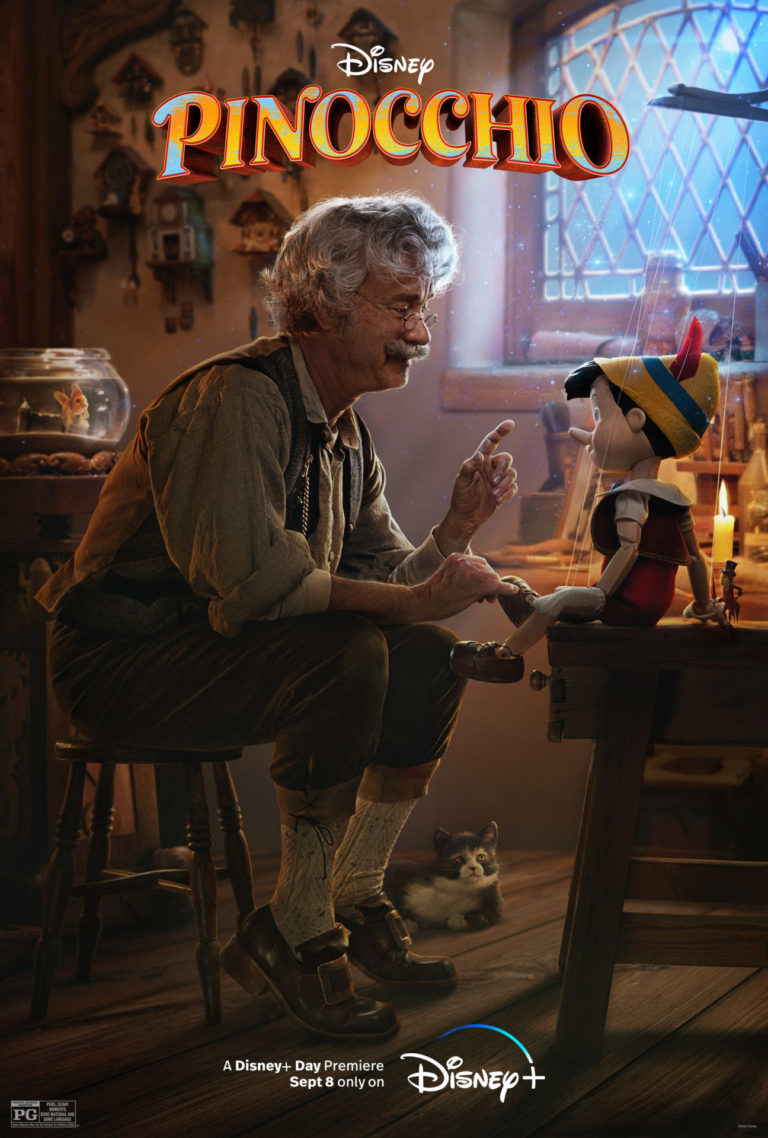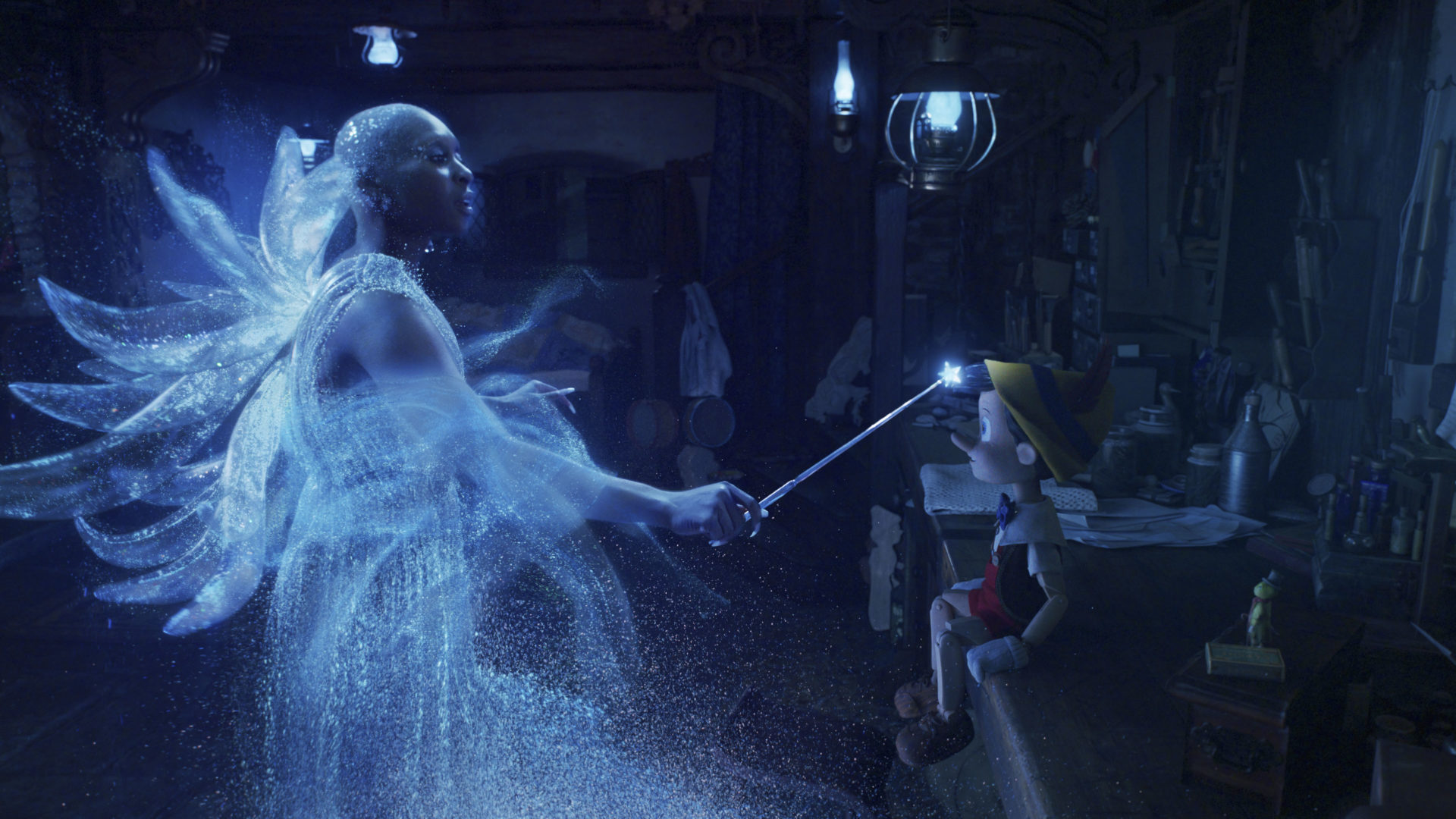
In the small Tuscan town of Pescia, at end of the 19th century, a writer called Carlo Collodi published the story about a marionette, in serial form for the Giornale per i bambini. This story eventually became a book: The Adventures of Pinocchio. Little did this Italian author foresee that his fairytale would become the all time classic par excellence.
Through the decades, Pinocchio has had an incommensurable number of adaptations for the big screen, amongst the most famous there are Disney’s 1940 animation, Roberto Benigni’s live action of 2002, and the live action directed by Matteo Garrone in 2019. The next adaptation will be Guillermo del Toro’s Pinocchio, set to have its world premiere at the BFI London Film Festival and will eventually stream on Netflix. But before this version there is another adaption that will soon be released on Disney+: Academy Award winner Robert Zemeckis’ new rendition of the beloved wooden puppet who embarks on the compelling adventure to become a real boy.

The visuals of Zemeckis’ motion picture are dazzling. The reconstruction of what an Italian town in the heart of Tuscany would look like in the late 1800s is exquisite, just as the fantastical settings of Pleasure Island — it looks like a phantasmagorical amusement park that contemporary parents and children can relate to. In the original Disney film, Pinocchio, Lampwick and the other kids were drinking beer and smoking cigars, whereas now they are on a sugar rush, eating junk food and there are also elements of bullying and social media. The alcohol and pool playing have remained as epitome of debauchery. Everything is depicted impressively. Zemeckis’ below-the-line team is worthy of praise for this accomplishment, especially director of photography Don Burgess; production designers Doug Chiang and Stefan Dechant; costume designer Joanna Johnston; visual effects supervisor Kevin Baillie; visual effects producer Sandra Sco.
Equally talented is the cast, that is however framed in directorial choices that follow the mishmash of Italianisation and Americanisms of the 1940 animation. Tom Hanks, who stars as Pinocchio’s loving father, has an Austrian look, complete of Lederhosen trousers. Zemeckis gives the woodcarver a backstory that enhances how this elderly man strongly desires to be a father and also pays homage to characters of other Disney films through the cuckoo clocks that are hung on Geppetto’s wall. Hanks mimics perfectly the accent adopted by Christian Rub, who lent his voice in the original Disney film. In terms of inflections the titular character, voiced by Benjamin Evan Ainsworth, speaks perfect American, just like his conscience, Jiminy Cricket( Joseph Gordon-Levi) — and his tempter, Lampwick (Lewin Lloyd). Some secondary characters like Schoolteacher Signore Rizzi (Angus Wright) and Stromboli (played majestically by Italian actor Giuseppe Battiston) have a stereotypical Italian enunciation. Furthermore, the new Pinocchio follows the old Hollywood tradition of having villains with a British accent — a clear Disney example was Scar (Jeremy Irons), in The Lion King. In Zemeckis’ film, the Albion inflection comes through with “Honest” John (Keegan-Michael Key) — the cunning fox who is always accompanied by his silent cat friend Gideon — and The Coachman (Luke Evans), who leads all the disobedient children to Pleasure Island. However there are also two British actresses playing friendly characters: Academy Award nominee Cynthia Erivo as the Blue Fairy and Kyanne Lamaya in the role of Fabiana. All the musical performances are played impeccably by the actors who sing and project the beguiling alchemy that is found in Disney movies.

Despite the cast’s aptness, the script penned by director Robert Zemeckis and Chris Weitz feels drenched with bombastic rhetoric. The storyline undoubtable retraces the original film and simultaneously instils the values of contemporary society, but it sometimes overdoes it by spoon-feeding audiences on “positive thinking” and moral standards in an excessively sanctimonious way. Even the ending — that according to the director has the intent of allowing audiences to draw their own conclusions — reiterates the phrase that comes up continuously about what it means to “be real”: something that cannot be found in fame or a human form, but in self-acceptance, bravery, selflessness and truthfulness. The message is truly uplifting, but the way it is emphasised in the dialogue becomes overwhelmingly redundant. Yet, in terms of soulfulness that is shown and not preached, Zemeckis is successful in making the remake more inclusive. Disability is delicately introduced through the character of Fabiana and marionee Sabina (Jaquita Ta’ie) and many characters are of colour, providing a more diverse representation in the fairytale format.
Zemeckis’ Pinocchio finds more clever ways to coalesce the old with the new: next to the characters that were present in Disney’s animated film — such as Geppetto’s cat Figaro and his goldfish Cleo — there is a new friend who is Sofia the Seagull (Lorraine Bracco), who completes the merry family picture. Old songs get a revamp and new ones are introduced, thanks to the artistry of Alan Silvestri and Glen Ballard. A touch of fairytale magic is added by passages where rhyme is present.
Zemeckis — just like Disney inspired by Collodi — succeeds in describing childhood as a phase of life that does not exclude suffering and misery. Pinocchio, in fact, finds himself in dangerous situations from which he emerges with resilience. Life is shown “unfiltered” (to use a term that is now popular in the digital era), as social life is marked by violence, oppression, malice and indifference. In his adventures Pinocchio meets many perfidious characters, always ready to exploit the weaknesses of others. In these regards Zemeckis’ Pinocchio truly presents an allegory of modern society: a lucid gaze upon the contrasts between respectability and free instinct.
Final Grade: C+

